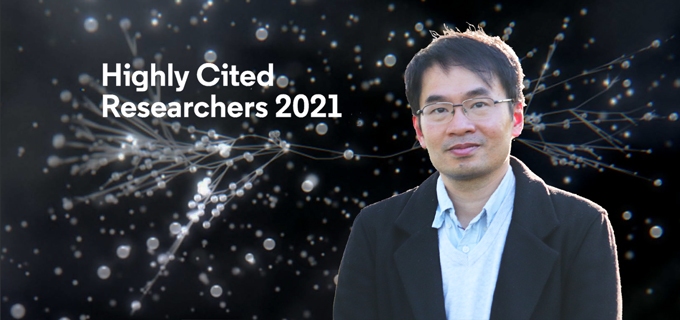When Dr Minh Bui started his research in bioinformatic methods, algorithms, and models to infer phylogenetic trees from large DNA sequencing data, he never imagined that his work would become essential in fighting a global pandemic, making him one of the most cited scientists in the world.
“My true aim is really just to publish some impactful research work that is potentially useful for many scientists,” said the Senior Lecturer of the ANU School of Computing, surprised to see himself on the 2021 list of Highly Cited Researchers. Numbers speak for themselves when measuring how impactful Bui’s work is. According to analytics company Clarivate, his 44 publications were cited more than 15,000 times in the last decade, giving him a place on the list. His work with IQ-TREE, an open source software tool to help scientists synthesize enormous volumes of genetic data to map the evolutionary trees of biological entities, was cited more than 6,000 times. IQ-TREE (now in version 2.0) was downloaded more than 50,000 times in 2020, and the genomic data it produced contributed directly the identification of COVID-19 variants and the development of vaccines. IQ-TREE “introduced a new and general method that every evolutionary biologist can use to analyse their data”, said the scientist. “I think the success is not only because IQ-TREE was already better than other state-of-the-art software at the time, but also it went a long way beyond research software: I applied a lot of industrial standards in software development to make it very user-friendly and also spent a large effort to support the user community. Therefore, IQ-TREE has quickly become a go-to software for many labs around the world.” To improve the software, Bui and his research team were awarded a total of $464,000 as part of Chan Zuckerberg Initiative (CZI) Essential Open Source Software for Science (EOSS) program. Pioneers in their fields over the last decade Each year, Clarivate analyses thousands of scientific publications and identifies the world’s most influential researchers — the ones who have been most frequently cited by their peers over the last decade. In 2021, fewer than 6,700, or about 0.1%, of the world’s researchers, in 21 research fields and cross-fields, have earned this exclusive distinction. The Highly Cited Researchers’ names are drawn from the publications that rank in the top 1% by citations for field and publication year in the Web of Science™ citation index, and the list identifies the research institutions and countries where they are based. Australia ranked fourth with 332 highly cited researchers, after the USA, China and the UK (see table below). Bui was one of the 11 researchers with primary affiliation to The Australian National University to appear in 2021’s list. The institution with the highest concentration of Highly Cited Researchers in the world was Harvard University, home to 214 of the ranked academics. Figure 1: Highly Cited Researchers by country or region | Ranking | Country/Territory | Number HCRs | % | Change % Share 2018 to 2021 | |:——–:|:——————:|:————-:|:—–:|:—————————-:| | 1 | United States | 2,622 | 39.7 | -3.6 | | 2 | China Mainland | 935 | 14.2 | +6.2 | | 3 | United Kingdom | 492 | 7.5 | -1.5 | | 4 | Australia | 332 | 5 | +1 | | 5 | Germany | 331 | 5 | -0.9 | | 6 | The Netherlands | 207 | 3.1 | 0 | | 7 | Canada | 196 | 3 | +0.3 | | 8 | France | 146 | 2.2 | -0.4 | | 9 | Spain | 109 | 1.7 | -0.2 | | 10 | Switzerland | 102 | 1.5 | -0.7 |
Source: Clarivate
Joel Haspel, Senior Vice-president Strategy at Clarivate, said, “As well as documenting ‘Eureka!’ moments, this data tells the story of late nights spent filling in grant applications, poring over results in the lab, the unsung work of peer reviewing contemporaries’ manuscripts, and the many small failures that ultimately lead to bigger successes and accelerating innovation.” Looking ahead: future computational challenges Bui’s team is still working at full speed, as the COVID-19 pandemic sparked large sequencing efforts around the globe to study this virus. “Today there are already more than 5 million virus genomes available, up from just one in December 2019,” said Bui. “My team and I are currently focusing on solving computational challenges with such huge amount of data.” As for long-term goals, Bui wants to develop next-generation methods and models for the post-genomic era. “One important direction is to use machine learning techniques to improve traditional phylogenetic methods. Whether or not it becomes a reference, you will know in 5 years,” said the scientist with a big smile.
________
READ MORE about Dr Bui’s groundbreaking research and his journey to ANU

